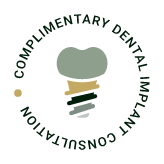Most people know that proper dental care and a healthy lifestyle are essential to prevent oral health issues, such as gingivitis and periodontitis. Although you might know that the two problems involve gum health, do you know what each one actually means? They’re both stages of gum disease, but there’s a very large difference between them. Read along as your dentist in Spring Lake explains how gingivitis and periodontitis differ.
What Is Gingivitis?
Gingivitis is defined as inflammation of the gums. When plaque accumulates in the small areas between teeth, it causes the gums to become inflamed and easily bleed while brushing or flossing. This chronic state of inflammation is a warning sign from your teeth and gums that you must be more proactive about your oral health. If left untreated, gingivitis can progress into a more serious stage of gum disease like periodontitis.
Here are a few factors that can increase your risk of gingivitis:
- Smoking – Tobacco use is one of the biggest risk factors of gum disease. It can also lower your chances of effective treatment.
- Poor Oral Hygiene – Failing to brush and floss regularly can lead to onset gingivitis.
- Hormonal Changes – Hormone changes that occur during puberty, pregnancy, or menopause can increase your chance of sensitivity and inflammation in your gums.
- Poor Diet – An unhealthy diet deprives your body of the vitamins and minerals it needs to thrive, making it more difficult to fight off infections like gum disease.
- Chronic Disease – Diabetes, HIV, and cancer are a few health conditions that can increase your chances of developing gum disease.
What is Periodontitis?
As mentioned earlier, periodontitis occurs when gingivitis is left untreated. It causes the inner layer of the gum and bone to pull away from the teeth and form pockets. Bacteria and other debris can collect in these small spaces and become infected. If plaque spreads and grows beneath the gum line, it can lead to tooth and bone loss. This stage of gum disease can lead to poor tooth alignment, gum recession, and clear pockets between the teeth and gums.
How You Can Tell the Difference
Now you know what gingivitis and periodontitis are – but what’s the difference between the two? Here’s how you can tell:
- Age – It’s rare for adolescents to develop periodontitis. However, it’s entirely possible for them to have gingivitis.
- Pain – Do you have pain while chewing? That could indicate that gum disease (if present) has progressed from gingivitis to periodontitis.
- Tooth Condition – With gingivitis, your gums might be irritated, red, and swollen but your teeth should still be firmly in place. On the other hand, it’s likely you have periodontitis if one or more teeth are loose.
- Breath – Once gingivitis turns into periodontitis, you might have persistent bad breath as a result of the excess bacteria in your mouth.
If you are experiencing symptoms of gum disease, make sure you contact your dentist as soon as possible to confirm whether you have it. If caught early, it can be treated with periodontal therapy, and you can go back to having a healthy and problem-free smile in no time!
About the Practice
At Dooley Dental, we offer exceptional, state-of-the-art, individually tailored dental care that is guaranteed to meet all your oral health needs. Our team will go above and beyond to make every visit as comfortable and enjoyable as possible. If you think you have gum disease, our dentist can evaluate your gum health and address your problems as needed. Visit our website or call (732) 974-2288 to schedule an appointment.



